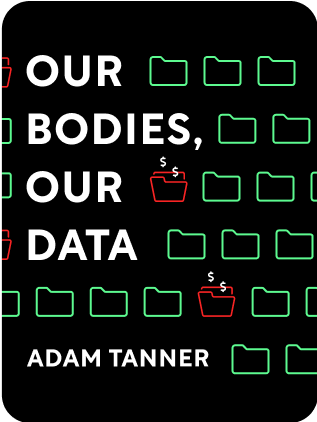

This article is an excerpt from the Shortform book guide to "Our Bodies, Our Data" by Adam Tanner. Shortform has the world's best summaries and analyses of books you should be reading.
Like this article? Sign up for a free trial here .
Did you know that the selling of healthcare data is big business? Where does the information come from, and how is it used?
There’s a market for healthcare data. In Our Bodies, Our Data, Adam Tanner provides a fairly comprehensive list of who is selling the information. He also shares a surprisingly (perhaps disturbingly) long list of how different types of firms use medical data for their own purposes.
Read more to learn the sources and uses of healthcare data—as well as the key players in the industry.
The Big Business of Healthcare Data
Reselling data is a high-margin business, and thus tantalizing for managers to add to their bottom line. Here are some of the companies who are involved, why they buy healthcare data, and what they do with the information.
Where Healthcare Data Comes From
Every vendor you interact with to get medical service is able to sell medical data. Our Bodies, Our Data describes the following data sources:
- Pharmacies
- At the beginning, pharmacies were provided free software by McKesson (a drug wholesaler) in exchange for bulk sales data.
- In the 1980s, IMS paid $50 per month for the pharmacy to load its prescription files onto a floppy disk.
- Now pharmacies receive $0.01 per script.
- Clearinghouses and Pharmacy Benefit Managers
- Their normal function is to route claims from pharmacy or doctor to the payer (usually an insurance company).
- Drug Wholesalers
- Their normal function is to provide pharmacies with services to maximize reimbursements.
- Medical Providers
- In the 1960s, IMS asked doctors to complete surveys on prescriptions for different illnesses.
- PDS sent surveys to doctors, paying $2-$10, on preferred medications and prescriptions per week.
- Electronic medical records now make data transfer easier.
- Large hospital networks like the Mayo Clinic, Kaiser Permanente, Geisinger currently provide data for research, pharma, consultants.
- American Medical Association
- Sells the Physician Masterfile to data companies
- Insurers and Insurance Claims
- Provide diagnoses, procedures performed, and medications to data companies
- Optum, HealthCore, BlueHealth Intelligence sell to data miners such as IMS Health
- Diagnostic Labs
- All test results can be sold.
- For marketers, these are useful for getting a patient’s diagnosis and rushing a salesperson to the doctor before the patient even knows about her diagnosis.
- Employers
- Can sell insurance claims to data miners
- Electronic Medical Records
- Allscripts provides data to IMS Health, receiving $30 million a year in sales
- GE Healthcare sells data from its Centricity EMR.
- Data Brokers
- LexisNexis sells medical claims from many payers, covering 250 million patients.
- Non-medical data brokers like Experian, Epsilon, and Acxiom sell to medical data miners. These brokers aren’t subject to HIPAA and can cell non-anonymized records.
- Public Data on the Internet. Sources include:
- Social media: miners monitor Facebook and Twitter for mentions of medication, ailments, and keywords like “diagnosed with.”
- Review sites: for doctors, offices
- Location and exercise data from devices
- Real estate transactions
- Forum discussions
- Proprietary Data—while these haven’t been confirmed to be currently under sale, be aware that in the future they could be.
- Any trackable activity online, including Google searches, Youtube videos watched, ads clicked
- Profiles and surveys, like on medical websites such as webMD
- Data collected by medical devices, such as Apple HealthKit
How Healthcare Data Is Used
What is enabled by having hundreds of millions of patient records?
Many pharma business decisions can be empowered by granular data on which patients take which drugs in which locations. Research studies are also empowered by large datasets.
The risk is that more unsavory, discriminatory uses can arise.
Here’s an array of how different types of firms can use medical data for their own purposes.
- Pharma Companies
- Empower their salesforce to market drugs to more susceptible doctors
- They can get fast feedback within weeks on whether their efforts on greasing doctors are working.
- Large pharma companies pay $10-40 million per year for IMS Health data, consulting, and services.
- Understand their competition and breakdown of market share
- Understand patient behaviors:
- Persistency (how long they keep a drug)
- Compliance (how often they fill a prescription)
- Switching behavior and what specific drugs they switch to
- Concomitance (other drugs patient takes)
- Predict which drugs will be sellers, market needs for different illnesses
- Market medication to patients
- Combine demographic data from anonymized sources that are enriched for your ailment or treatment, then use named sources to target named users who are more likely to buy. For example, a marketer might find that people who use a particular drug are in their 50s in rural Tennessee; they can then target people with that specific profile for their drug.
- Market medication to providers
- They can both market in response to what the provider tends to prescribe, and also customized to what the doctor’s patients have recently been diagnosed with
- Empower their salesforce to market drugs to more susceptible doctors
- Financial Traders
- Use medical data as info to trade with—for instance, which drugs are popular and not can influence what stocks will rise and fall
- Researchers
- Study long-term outcomes of different treatments
- Study the effect of regulation on health outcomes
- Public health studies, such as epidemics, drug use, health trends
- Employers
- Study patient and spend data to figure out how to reduce costs
- Benchmark their costs against other employers
- Healthcare Providers
- Compare cost and quality with competition
- Improve care internally
- Market to recruit new patients
- Payers
- Find billing fraud
- Insurers, Underwriters
- Get patient consent for insurer to access named data on prescriptions, tests
- Insurers can share info with each other through Medical Information Bureau
- Attorneys
- Contact patients for class action lawsuits
- Advertising Platforms
- Sell data to Google or Facebook to allow more precise ad targeting of their users
- More controversial or illegal uses—not currently done publicly, but are notable risks in an environment with such granular and plentiful data.
- Employers can discriminate against people with higher healthcare costs
- Lenders may charge higher interest to people with specific conditions
- Insurers may charge higher life insurance premiums to those of a particular profile
- Blackmailers may use health data to exploit people.
- Traders may use health data of CEOs.
Notable Players in Healthcare Data
The book describes the following major players in the medical data industry.
IMS Health (now known as IQVIA)
- Founded by a German man, L.W. Frohlich.
- He had a medical advertising agency, LW Frohlich & Co.
- He then partnered with Arthur Sackler, at another ad agency, to split the business between competing pharma companies.
- Frohlich developed new marketing practices for pharma, like sending telegrams to wholesalers to announce the new drug terramycin. He also developed direct mail to doctors.
- As an advertiser, it was difficult to prove the effect of marketing on their clients’ bottom line, so Frohlich created Intercontinental Medical Statistics (IMS) with David Dubow to research market share, then use this to inform ad clients.
- Frohlich died in 1971. Sackler’s brothers inherit the majority of IMS through a tontine. Some suspect Arthur Sackler was the originator of IMS and put Frohlich as its figurehead.
- IMS Health has the popular Drug Distribution Data service.
- Was acquired for $1.7 billion in 1988, under the same umbrella as AC Nielsen.
- In 1993, it started providing doctor profiles with its Xponent service
- It went public with an IPO in 2014.
- In 2015, the company had $2.9 billion in revenue. Half of the revenue came from information, and half from services. It made the logical step of providing consulting to its clients once they had the data.
- In 2016, IMS merged with competitor Quintiles, and the joint company was renamed IQVIA in 2017.
- The firm is said to have 90% of global market share.
PDS (Pharmaceutical Data Services), Source International
- Started by MckKsson in 1978
- Began with doctor surveys, then started buying prescription data from pharmacies
- Funded by pharma like Merck, Pfizer
- Was purchased in 1988 by IMS execs Evans and Dennis Turner
- Afterward, pushed into doctor-identified information, getting accurate data on prescriptions and sales per doctor
- Renames as Source International
- Was acquired by Symphony in 2012
Verispan
- Was created by McKesson and Quintiles in 2002
- Got annual revenue of $100 million, with its biggest customer paying $6 million per year
- Was acquired by SDI, then acquired by IMS
ArcLight
- Started by Krieger from Cardinal Health. It challenged IMS with a few benefits:
- It provided data reports more quickly
- It gave large pharmacies equity in ArcLight to avoid upfront fees
- Walmart stopped working with IMS because competitors could figure out individual store revenue numbers from IMS reports
- ArcLight went out of business in the 2000s a few years after trying to create anonymized patient dossiers. It had difficulty matching joining anonymized data.
Other data brokers and companies involved with medical data:
- Cardinal Health, ScriptLINE
- Symphony Health
- MedStat
- Sold to Thompson in 1994 for $339 million
- Then sold in 2012 for $1.25 billion to form Truven
- Then sold to IBM Watson in 2016 for $2.6 billion
- Data analysis by insurers
- United Health and Optum
- Anthem and HealthCore
- BlueBCBS and Blue Health Intelligence
- LexisNexis with its medical claims warehouse
- Medivo
- Examone, Milliman—prescription data for life insurance
- Practice Fusion
- Gave away EMR technology free, to sell ads to users and sell patient data to brokers. Sought between $50,000-$2 million for data sets
- Raised >$100 million but sold for $100 million to Allscripts, after a Department of Justice investigation into its practices
- Startups
- Betterpath—shut down?
- Carenity
- Patientslikeme
Now you have a clearer picture of the healthcare data industry and how it works.

———End of Preview———
Like what you just read? Read the rest of the world's best book summary and analysis of Adam Tanner's "Our Bodies, Our Data" at Shortform .
Here's what you'll find in our full Our Bodies, Our Data summary :
- Why your medical data is no longer safe
- Who is selling your medical data and why
- Why it’s already too late to opt out or take back your data






